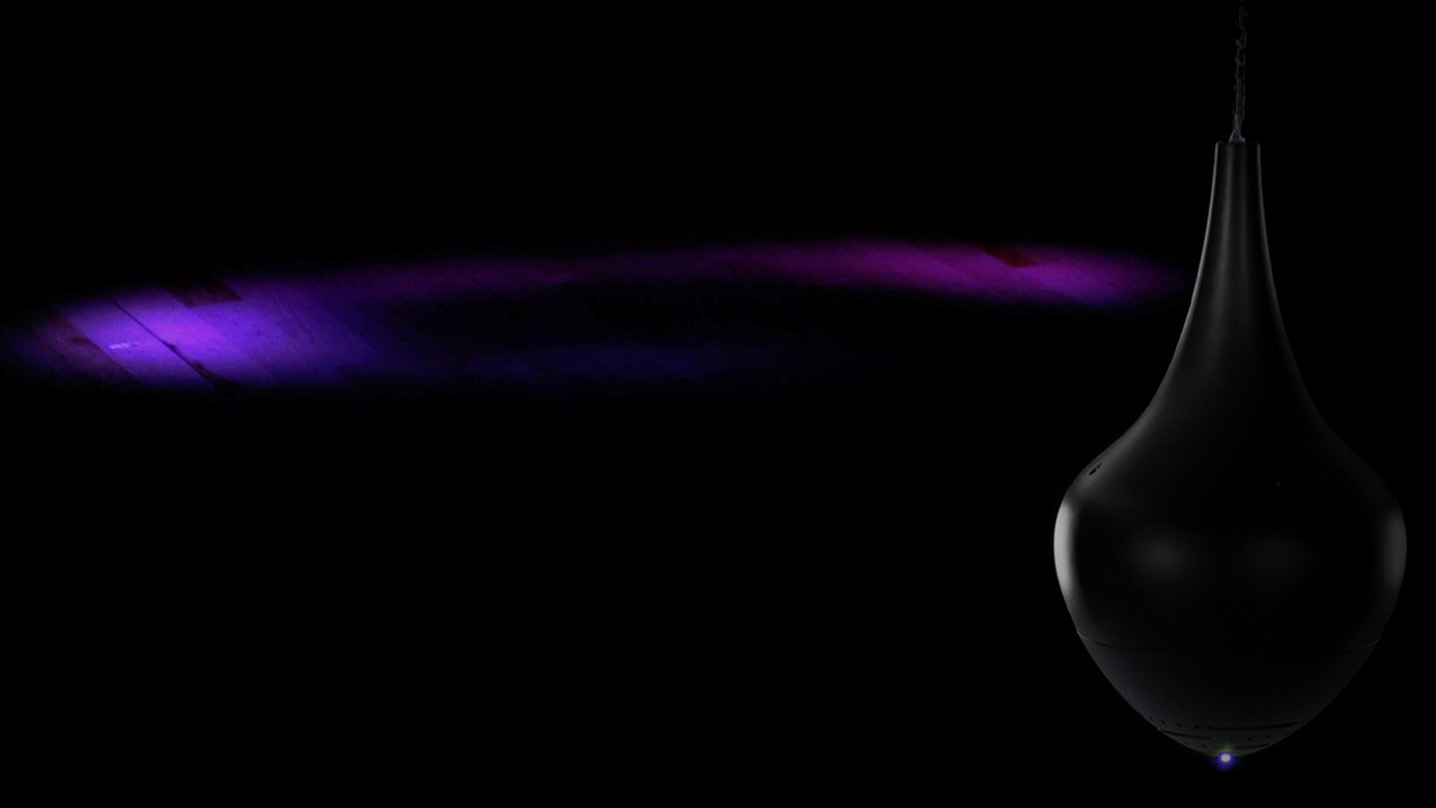b.o.b. (black orbiting b.o.b.)
Thesis Statement
This work consists of two spaces experienced one at a time in sequence: the first in the form of an ephemeral light painting, and the second is the mechanism by which the light painting was made. In creating this work [sculpture] in an iterative and open-ended way, I explored the relationship between experience and interpretation, learned more about the relationship between the spaces I created, and asked questions about subjectivity and the value of experience.
Abstract
Through b.o.b., I am examining how meaning is assigned to experiential art. With little information before entering, the viewer fully immerses themselves in the environment, and thus the experience relies on your subjectivity: assumptions, definitions, conclusions, and meanings.
The installation begins with two doors; which door you enter is your choice, but the choice dictates your experience and understanding of the installation. Although you don’t have information about the door you choose, the choice is yours and the experience. The meaning is yours alone, based on your unique perspective.
Regardless of your choice, this installation uses light and the abstraction of time to facilitate an understanding of experience, apparent choice, and meaning-making. The installation is not complete without you.
I created b.o.b by building a 22” x 13” pendulum and suspending the pendulum in a dark room. The pendulum’s weight amplifies the movements of the gantry, which draws more attention to the rhythm and pattern. The adjacent room is just as dark and consists of a projector that reveals the pendulum’s movement, thereby creating the ephemeral light painting for the viewer to discover. Both spaces are dark with focused light in specific areas to highlight and draw attention to the focal point, either the pendulum or the light painting.
While reading through the comments, anecdotes, and testimonies of those who experienced b.o.b, I found that every person’s experience of the installation was unique. My goal was to create this work for people to enter with limited guidance and information and tune into their curiosity and discovery processes for finding meaning in an experience
Research/Context
This project started as a way to understand the kinetic energy of a moving object. Light traced a path and, when recorded, gave insight into the history of its movement. The artifacts produced from this process had so much depth and character that I couldn’t stop coming back to them. I started to think of how I could change or interact with the object to inform the artifact. I then looked at conceptual artists and how they invited users to experience their art/installations. I looked to a few artists for inspiration: James Turrell, Robert Irwin, Rafael Lozano-Hemmer, Mary Corse, and Bruce Nauman.
James Turell said it best, “My desire is to set up a situation to which I take you and let you see. It becomes your experience”
Irwin writes, “When you walk into a room, you assess it instantaneously, habitually, before becoming aware of it. You make sure there’s not a hole you’re going to fall into, but mostly you’re not even aware of what you’re thinking.”
For the physical construction of this installation, I had to balance strength, weight, cost, and durability. Each component had to work as a system, so cross-compatibility was critical. I also needed a way to stream live media from a camera to another computer running Touchdesigner; a Raspberry PI is used for the camera component and the streaming platform. Those four factors ultimately led to the choice of the specific x/y gantry and 3D printing of the “massive bob” from ABS.
Technical Details
I used an x/y gantry, a Raspberry Pi, a Raspberry Pi high-quality camera, a 4-inch midrange speaker, a 50-watt amp, an Arduino Nano Every, an RGB LED, 3/4 inch plywood, Stratasys Fortus 450 for 3D printing python, Touchdesigner, Rhino 7, Solidworks 2021, LightBurn, OpenBuilds Cam control, VNC.
Further Reading
I started this project with many assumptions about how people would interact with it and how I wanted to craft the experience. After user testing it at full-scale, I found some of those assumptions weren’t accurate. I had always thought viewers would enter into the pendulum room; however, after observing the installation for a few hours, I left the decision of what door to enter through up to the viewer. I also initially placed a lot of weight and emphasis on having the pendulum be reactive to the viewers in the room again; I found that this made no apparent difference in the experience. I wanted viewers to think about what they saw, so I split the installation into two spaces. Hopefully, dividing the space will cause people to contemplate the connection between the two spaces. I used an x/y gantry to create a variable pivot point for a pendulum. G-Code patterns control the gantry’s movements. A contact microphone connected to the gantry picks up the sounds of the motors; that signal is amplified and broadcast through a speaker embedded inside the pendulum. At the bottom of the pendulum, an LED is used to illuminate the pendulum’s path. Sitting beneath the pendulum is a camera that records the pendulum’s movement. The camera is connected to a Raspberry PI that live-streams the pendulum’s motion using NDI protocols. The NDI stream passes into Touchdesigner, where light trails are created from the pendulum’s movement through a series of operations. The light trail is then projected onto the floor of the adjacent room from the pendulum.
Code and Diagrams to come 5/20/22







